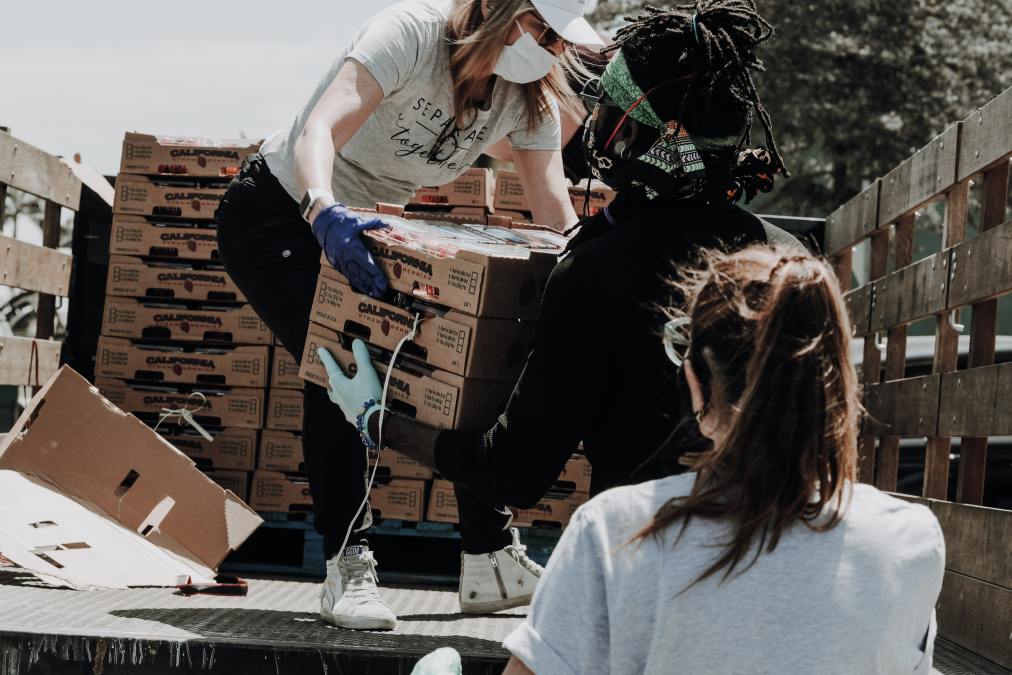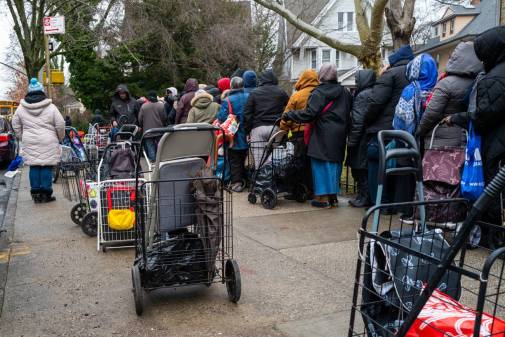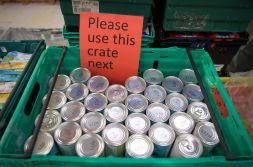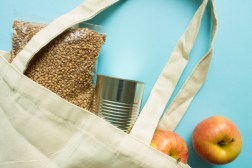As food insecurity rises, food banks turn to map tech

A father and daughter recently walked into a food bank in Cincinnati, and the daughter asked if they were there to volunteer again.
“No,” the father said. “We’ve made a lot of deposits here and this time we have to make a withdrawal.”
The anecdote came from Charles Hoffman, a marketing analyst for the supermarket chain Kroger, who shared it during the mapping company Esri’s online conference this week.
“When we talk to food bank leadership here, they are seeing such an increase in people who have never come in for their services,” said Hoffman, who’s coordinating with local groups through his role at 84.51, a Kroger-owned data science company.
But technology like the mapping software that Esri sells, he said, is proving to be one of the most powerful tools available to ensure that the services that food banks provide are well marketed to people who need help — especially those who during the pandemic have been made food insecure for the first time, a growing demographic. According to the hunger-relief organization Feeding America, the food insecurity rate in the United States now sits at 11.5%, a figure tied to a stunted labor market that continues to fuel millions of new unemployment claims.
‘All day long’
Rebecca Lehman, Esri’s nonprofit program lead, told StateScoop that one food bank she’s working with in Southern California was forced by heightened demand to move its operations from two small facilities into a stadium, where lines of cars sit “all day long.”
“In the U.S., the scary thing is that we’re seeing huge increases in demand for food,” Lehman said. “I think that’s around 40% in a lot of food banks that I’m talking to. In some states the projection is that there will be a 70% increase in food need at the worst. That’s pretty worrisome.”
Reaching people who have never used a food bank or food assistance is particularly challenging, said Nick DiSebastian, a marketing data analyst with the Atlanta Community Food Bank, a group that distributes food to 755,000 people. Many don’t know where to go or how it works, he said, which has led his organization to ramp up its marketing operations during the pandemic.
ArcGIS Online, Esri’s cloud-based mapping platform, has become the Atlanta bank’s “principal means of communicating,” DiSebastian said. A “COVID-19 Help Map” shows Atlanta residents where to find nearby food banks, linked to details like hours and how the process works, which many facilities have recently changed.
“A lot of partners have moved to a drive-through model where people are not so much shopping and walking through isles to get food but they’re showing up and receiving prepared boxes of food,” he said. “I would like to think it’s been really beneficial for our service area to have these details. It’s been a lot of work but it’s been effective and so we wouldn’t have been able to do it without that [geographic information systems] platform.”
The map replaced Atlanta’s phone-based system, which was manned by a receptionist who asked for the caller’s address and tried to match it with a nearby bank from a list. It wasn’t a convenient system, DiSebastian said.
A ‘complex, wicked’ problem
In Cincinnati, 84.51 is using maps to identify the neighborhoods with the highest rates of food insecurity so that local groups can adjust their services accordingly. Coupling census data with food bank locations reveals which areas are more than one mile from a facility, Hoffman said. The company has used the same technique to ensure there’s enough access to diaper banks, hygiene items put in high demand by the pandemic and translation services, he said.
The Atlanta food bank is also using maps to correlate data with its customer relationship management platform. DiSebastian said the software makes it easy to understand trends, such as how demand for various items has changed during the pandemic, which facilities have unfilled capacity and which have refrigeration and would therefore be good candidates to receive large shipments of produce.
Esri’s Lehman said that it’s hard for large food banks to keep track of all these details, but many cities around the U.S. are finding that food bank maps — which are crowdsourced in some regions to distribute the work of collecting so much information — are the most effective resource they have to ensure they reach their target audience and further the goal of reducing food insecurity.
Managing details is particularly important during the pandemic, she added, when supply chain disruptions further complicate an already complex logistical task.
“It’s one of those complex, wicked problems, as they say, where you pull on one string and you’ll pull out all the other issues along with it,” Lehman said. “Before [the pandemic] we were really at record-low levels of food insecurity, but now it’s not something that can be ignored and it’s not something happening somewhere else. It’s really happening across all our communities.”






